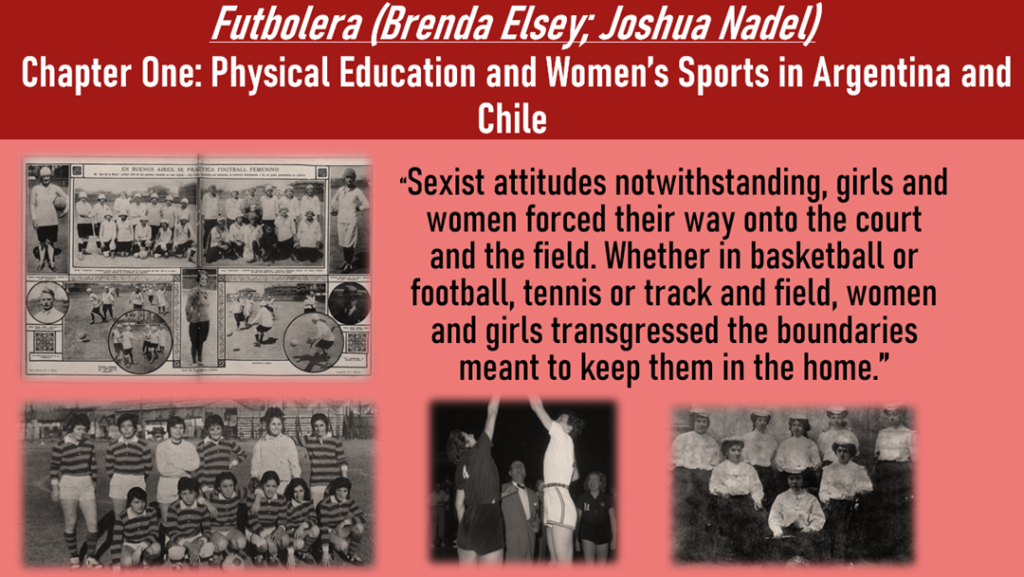
This week’s readings: Futbolera by Brenda Elsey and Joshua Nadel, Chapter One; From Beauty to Duty: A Footballing History of Uruguay, 1878-1917 by Martin da Cruz, Introduction, Chapter One, Chapter Two
Chapter 1 of Futbolera discusses the introduction of women’s athletics to Argentina and Chile – and while both countries had their own unique ups and downs, important figures to the movement, social reactions, and so on, the story in both locations largely remained the same. Sports were a man’s world, women could engage in physical activity like dance or gymnastics, but aggressive and competitive sports, like football were deemed unsuitable. The book discusses how this is based on questionable evidence, sometimes drawn from the animal kingdom, and that a large reason for this repression was due to the male-dominance of the fields of physical education, and a simple lack of understanding of the female body.
The chapter points out that both Argentina and Chile had come to realize that physical education and sports were important for ALL, but there were hard gendered lines drawn. Physical education and exercise were thought to be important for all in order to build healthy, moral citizens, but anything past that point was separated. The military homed in on men’s sports as a tool to glorify the country and build good soldiers and citizens. Men were also thought to be more in need of the aggressive physical play, where women needed to be more careful – not to get hurt, not to develop unsightly muscles, or once organized teams for women cropped up, to fall to lesbianism. The fear of homosexuality was not a concern in men’s sports, however.
Largely, female athletes (in both countries) had to be concerned about how they would be interpreted – their bodies, their game, and on top of that they often faced a lack of backing from the state/local clubs. Concerns about what was feminine or not, and thereby acceptable or not, were not only sourced from the men around them – the chapter even discusses a Chilean sprinter Adriana Millard criticizing another female athlete, Fanny Blankers-Koen for running and jumping like a man and having too much muscle.
One thing that I found interesting was the discussion of the importance of El Grafico to the coverage and normalization of women’s sports. The magazine depicted these women as real legitimate athletes, women were featured on the cover, playing the game, or with the equipment of their sport, which was uncommon in Argentina as female athletes were often highly aestheticized and stylized to show their beauty. El Grafico also identified the clubs the women featured played for further legitimizing and normalizing the place of women in sporting.
Women struggled to find a place in football (they eventually did), but in other sports, particularly basketball, they started to build their own space. Despite the societal expectations and pressure, and adversity they faced, a love for the game pushed them to subvert expectations and find a space for themselves.